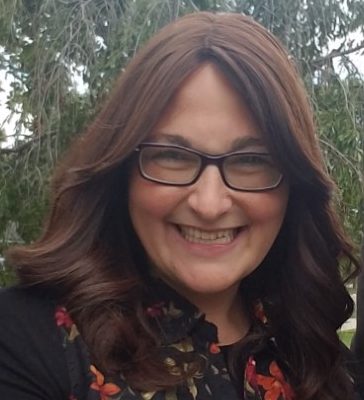Books, Glorious Books

There’s much more to any book than meets the eye

Who doesn’t love recommending the books they've enjoyed to others? We asked our Inside Scoop members: What’s your favorite book?
I have many! I particularly liked The Plan by Zev Spector because it was full of suspense!
— Mordechai Katz, 9, Passaic, NJ
There’s Zucchini in the Chocolate Cake by Miriam Schonzeit, because once you read the first story, you’re glued to your chair until you’re finished the book!
— Batsheva Dresdner, 10, Gateshead, UK
I like Libby Lazewink’s books, especially Three Cheers for Shira. I’ve read that a few times!
— Rina. R, Manchester, England
Proof Positive by Esther Toker. It’s full of suspense and up to date — this story could have happened yesterday!
— Malki, 12, Yerushalayim
I don’t have a favorite because every time I read a new book, I like it more than the last one!
— AGMM, 12, Ramat Beit Shemesh, Israel
I love books that are non-fantasy that I can relate to.
— Rochel Max, Cherry Hill, NJ
I like Yaakov Shulman’s gedolim books because they are interesting and teach a lot about past gedolim.
— Shmuli Friedman, 13, Monsey, NY
Shabbos, Shabbos, I Love You!
— Elisheva Gutlove, 4, Clifton, NJ
My favorite book is The Network by Rabbi Nachman Seltzer.
— Bracha Gutlove, 13, Clifton, NJ
Kids Speak!
— Leah Artmann, Simmy F, Akiva Gutlove, Esti Gutlove, Batya Goodman
STEP ONE:
Where does it all begin? A book starts off literally from nothing, just a speck of an idea that is bought to paper by the author. Let’s hear about this process from beloved children’s author Libby Lazewnik.
Hi, Libby! Please tell us about your first book.
Libby: My first book was Shira’s Summer, which later became the start of a trilogy called Three Cheers for Shira. Back then, I had no experience writing books, so I created a system. Each time I reread a chapter I’d written, I would pretend that I was a reader and change whatever I didn’t like. That book always has a special place in my heart, both because it was my first and also because it taught me so much!
Where do you get your ideas from?
Libby: My ideas come from anywhere and everywhere. Things that happened to me or to people I know, conversations overheard, or interesting things I see. Just about anything can be the kernel of an idea for a fantastic story!
What’s the hardest part of writing a book? What’s the best part?
Libby: I think the hardest part of writing a book is when you’re stuck in the middle and feel as if you’ll never reach the end! But I know that if I persist, I’ll get the job done.
The best part is plotting the story: figuring out the characters and what happens to them. Putting your imagination to work before you even write a word.
STEP TWO:
Once the author’s finished writing the manuscript, they need to send it to a publisher. Mrs. Rosenfeld (who is also the author of the adorable Yossi and Laibel books) of Hachai Publishers has generously agreed to tell us what goes on behind the scenes.
Hi, Mrs. Rosenfeld! Please tell us about Hachai. What were the first books you published?
Mrs. Rosenfeld: Hachai opened in 1989. A few books were published that year, including some that are still in print, like, All About Us, Goodnight My Friend Aleph, and A Little Boy Named Avram.
What’s the hardest part about publishing books? What’s the best part?
Mrs. Rosenfeld: The hardest part is not being able to publish all the manuscripts we receive. The best part is hearing how much teachers, parents, and kids love Hachai books!
What happens when an author sends you their manuscript?
Mrs. Rosenfeld: When an author sends in a manuscript, by mail or email, it is put aside for an editor to review. Hachai reads every single submission, and we try to respond within two to six weeks. Around Pesach or in Tishrei, it can take a bit longer. If the manuscript is something we would like to publish, we contact the author and draw up a contract. Once the contract is signed, the editing process begins. We work closely with our authors if any changes need to be made. Perhaps the original story has too many words and needs to be shortened. If the text rhymes, it sometimes needs some work so that the rhythm flows better. Often, our books have a note of explanation at the end, or a glossary, which is added at this point.
After the text is completely ready, Hachai gets in touch with an artist to bring the story to life. We decide what size would suit the book and how many pages it needs to tell the story. Our book designer works with the artist to think about which words and images belong on each page. The artist creates a miniature storyboard with sketches of each scene. After approval, he or she works on full-sized sketches with all the details we can expect to see on every page.
We look very carefully to make sure that every item in the illustration is correct: What season is it? How will the children be dressed? Are they holding a grown-up’s hand as they cross the street? Sometimes, we find funny mistakes. On one page, Laibel was wearing Yossi’s yarmulke and Yossi was wearing Laibel’s! Sometimes, we even ask a rav about certain details. Like, al pi halachah, where does the mezuzah belong on the doorway in our illustration?
When the sketches are approved, the illustrator completes the finished artwork and gives it to us as digital files on the computer. Then it’s time for the graphic artist to create the layout. We choose a font for the lettering, and he inserts the words on each page and on the cover. We look over all these files carefully, and then transfer them to the printer.
STEP THREE:
This seems like a perfect time to introduce Racheli David, a talented illustrator who also illustrates the Weekly Wisdom cartoon in Jr. every week!
Hi, Racheli! What was the first book you illustrated? How did you get started illustrating?
Racheli: I actually did my first book at age 17. My mother’s friend is a well-known author and she asked me if I wanted to try illustrating her book. I went over to her house and we worked on some sketches together. Another author later saw that book and contacted me to illustrate their book too. One thing led to another and the rest is history!
How long does it take you to draw illustrations?
Racheli: I am considered pretty quick, though I don’t time myself. I don’t have too much zitzfleish to sit on one picture for too long…!
What’s the most complicated thing you had to draw?
Racheli: To me, complicated pictures are A Yiddishe Kop style or Where’s Waldo type drawings, which are very detailed, or pictures that include lots of cars and vehicles, which I dislike drawing.
What’s the hardest part of illustrating a children’s book? What’s the best part?
Racheli: The hardest part is the corrections; sometimes that can be annoying. But the best part is getting to see the books in print and receiving compliments about the pictures!
STEP FOUR:
The text has been perfected, the illustrations are finished, everything’s done. Now what?
What happens once the book is completed?
Mrs. Rosenfeld: The printer prepares a sample so we can see what the finished book will look like. If it looks good, the printing and binding process begins. It takes months for the books to be ready and shipped to our headquarters in New York. Then, it’s time to call all the bookstores and tell them we have a new book for sale!
STEP FIVE:
Once a book is published, there’s only one thing left to do: Get it to all the bookstores out there and wait for people to buy them so kids like you can read and enjoy them! Meet Mr. Avrohom Plotnik of Spitzer’s Hebrew Book & Gift store in Southfield, Michigan:
Hi, Mr. Plotnik! Please tell us about your store.
Mr. Plotnik: It’s a family business — my wife’s uncle opened it about 70 years ago. We sell all kinds of Judaica and thousands of books.
How do you decide which books to sell?
Mr. Plotnik: I get the books that I know my customers will want to buy. I know they especially love cookbooks, novels, children’s books — especially comic books. I can’t keep enough of them!
How do you display the books so people will want to buy them?
Mr. Plotnik: I have a special section for the new releases. A book is usually considered “new” for about three months and by then there are more new titles out. At that point, I’ll move those books toward the back and the newer stuff goes on the new releases shelf.
Do you get to read all the new books first yourself?!
Mr. Plotnik: No, I don’t… but my grandkids sure do! They love getting the new books from Zaidy’s bookstore!
What’s your favorite part of your job?
Mr. Plotnik: I love what I do. The best part is seeing my customers happy — like when they come in and say, “Oh, awesome, you got the new book in, I can’t wait to read it!”
How do they know about the new books?
Mr. Plotnik: Advertising! The publishers let people know about their new releases through ads in magazines like Mishpacha. I also advertise to let people know about the new stock I have in.
The key in this industry is to constantly update the stock, keep up with what’s new. I want my wonderful customers to keep coming back!
There are many, many books that haven’t even been written yet! Why, the next book out there could be written or illustrated by… you!
(Originally featured in Mishpacha Jr., Issue 855)
Oops! We could not locate your form.






